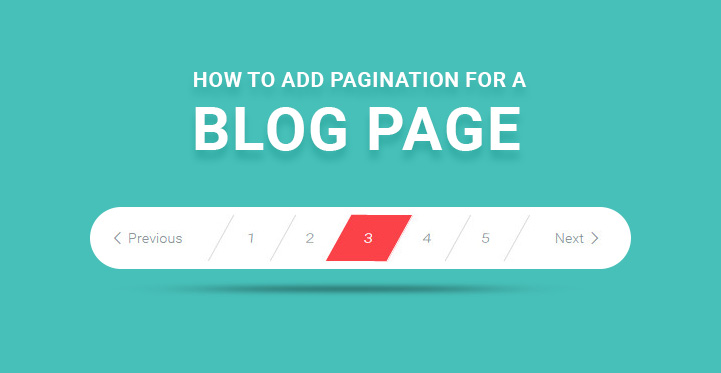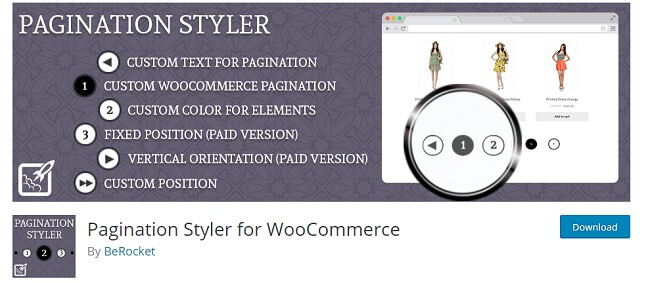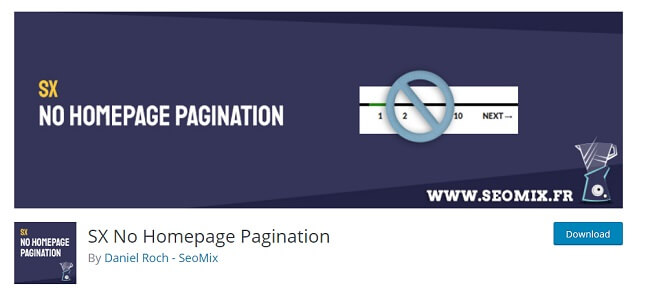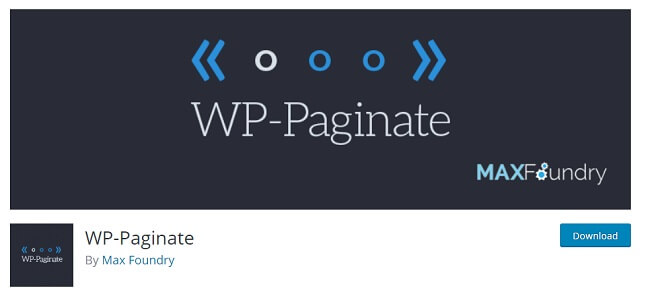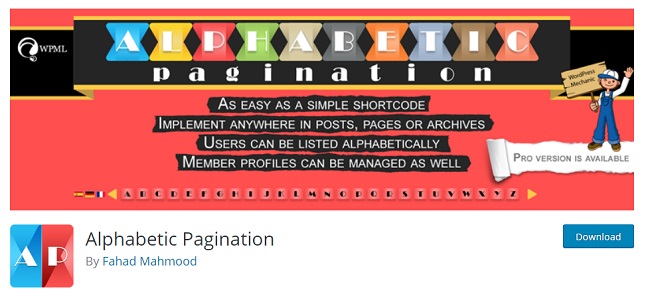Do you want to know how to add pagination for a WordPress blog page?
We have already discussed the importance of post and page pagination and offered several practical ways to do it. If you have skipped that article, you can find it here: (article 25)
Table of Contents
This time we’ll continue to discover other practical tools to help you have your blog page successfully split and presented in small portions.
The way you split your blog into several pieces and serve your content in easy to digest parts is one of the reasonable methods applied by lots of bloggers and website users.
Well, in certain cases, pagination is content sensitive and a really good pagination depends on the type and nature of your content. However, having pagination within your posts and pages will make sense in relation to your site’s SEO results and boosted traffic coming to your pages, no matter what your site’s content or its overall context is.
Splitting up your content into more than one pages and giving the page links at the top or the bottom of the current page is simpler than you have ever thought of. You can do it manually by the application of the code: wherever you want your page break to appear.
Alternatively, you can add pagination plugins to your website in order to provide reasonable content length.
Now, if you want your website visitors or blog readers come across a decent and accurate pagination, here are some useful tips to help you add pagination for a WordPress blog page.
1. Pagination Styler for WooCommerce
Pagination Styler for WooCommerce is one of the advanced and premium quality pagination systems you can freely use to add pagination for a WordPress blog page. It comes generated with lots of controls and features that you can exercise to make your long content served with multiple pages.
In addition to the mechanical splitting of the post content, you can also add text and image in pagination buttons.
As for the additional features, you can choose to display pagination buttons with only Previous and Next buttons, set different button layout and content loading type for each post or page, choose the pagination buttons locations like top, bottom or both, etc.
If you would like to change the layout and style of the pagination buttons appearing on your website, you are powered to do it via the Admin Dashboard, AP pagination. You will find other customization options here as well.
2. SX No Homepage Pagination
SX No Homepage Pagination is the next simple and user optimized tool to help you add pagination for a WordPress blog page. It is ready made to provide you with easy to control platform and is aimed at making your web user’s virtual journey more attractive and easy to navigate.
Ther4e are six style sheets for the pagination for posts and comments with this plugin: CSS3, Flickr, Digg, Sabrus.us, Green and Grey.
Set HTML/CSS Advanced and Posts Advanced Settings, choose a SCC style, choose to include the default style sheet of Simple pagination, enable to always show page navigation even if there’s only one page, etc.
You are also capable of setting the number of page links to show before and after the current page and more.
3. Pagination by BestWebSoft
Improve your site’s SEO results and offer more links to your valuable content by the application of Pagination by BestWebSoft. This sophisticated and intelligent pagination system is well developed to automatically add pagination to your WP blog and pages, including archive, category, tags, author pages, search, etc.
If you want to save your financial means, you are welcome to use the free version of this plugin. The free version comes with pagination for home, blog, archive, search results, as well as paginates posts and pages, as well as customization options to define the location of pagination.
It can be above or below the main content or on both positions. You can also choose to display nest and previous pages and make use of numeric pagination, full (1,2,3,4,5,6,7) or short (1,2….6,7), set background color, current page text color and more.
4. WP-Paginate
WP-Paginate is one more reliable plugin to give you the needed control over your site, when it comes to its navigation and pagination settings.
Add pagination for a WordPress blog page with the slider if the page number goes beyond the given width. It is well optimized for responsive usage as well, letting your website or blog keep its proportions and accurate view across different platforms.
This plugin is also admin friendly and easy to manage from settings page and lets your preview all your changes instantly. Additionally, it is localization ready so that you can have this plugin on your multilingual site.
5. Alphabetic Pagination
If you want to result in a better user experience while making your site’s pagination system more organized and easy to use, use Number My Post Pages.
This plugin offers you an alternative version of dealing with previous and next links, showcasing dropdown or not, etc. You can also choose whether you want the navigation panel to be displayed if there is only one page.
6. Pagination Styler for WooCommerce
Set up good website navigation to simplify the access to your large posts and pages with the help of TW Pagination. Easy to install and use, TW Pagination will make it possible to paginate also post comments to keep your website well arranged and visually neat.
In addition to the default pagination settings, you will be able to rely on other options as well, like title to be displayed before the pagination links, the text/HTML to be used for next and previous page links, as well as the text/HTML to be added before or after the pagination links.
You are also free to set the number range to be showcased before and after the current page, as well as the number of links showcased at the beginning and at the end of pagination.
If you are new to the digital world and have just gotten around to setting up a website, then you may want to check out the tips posed below on pagination for a WordPress blog page.
Pagination is the method by which you divide your content up into several pages and rather a nifty trick to boost up those page views and page impressions, both of which should enable you to increase your SEO rankings.
It is more like you are being offered a glimpse into a good article and you want to read more, so naturally, you would click the link that says “read more” at the bottom of the paragraph.
Here are a few reasons as to why you should opt for pagination for a WordPress blog page.
- User experience: As pointed out earlier, most users hate long winded posts and given this, it makes sense to use pagination to trim tha additional content and post a link at the end of the paragraph that says “click here to read more”.
It makes more sense to offer other users a choice and that way, those interested in the topic matter, will click on the link and review the other pages as well. This should enhance user experience as well since your front page would feature trimmed content, look easy on the eye and be easy to navigate through as well.
- SEO: One of the benefits of pagination is the immediate boost to your SEO rankings as well as traffic; with more users checking out your other pages, you are bound to see an incremental growth in traffic thanks to the various page views and impressions. Some of the WordPress themes come with built-in pagination tools but these are generally found on the premium ones. You may want to check out some of our free WordPress plugins that you can utilize to add pagination to your WordPress blog page.
- Optimize your content: You can also use pagination as an effective tool to optimize your content and instead of the usual “to read more, click here”, you can set up buttons with “previous” or “next”, thereby making it look even better.
The whole purpose of your post is to attract more readers and thereby boost your traffic and with pagination, you should be able to do just that.
If you are planning to use external plugins for your WordPress blog, then you should know that the process to download and install the same is fairly easy.
Once you have installed the plugin on your WordPress site, you can head over to the admin area, change the layout for the content, the buttons you want to use on the content and even optimize the same seamlessly.
This is why it makes more sense to opt for pagination for a WordPress blog page. After all, most online users tend to stay online for a few seconds at most and you would not want to overwhelm them with an information overload now, do you?

